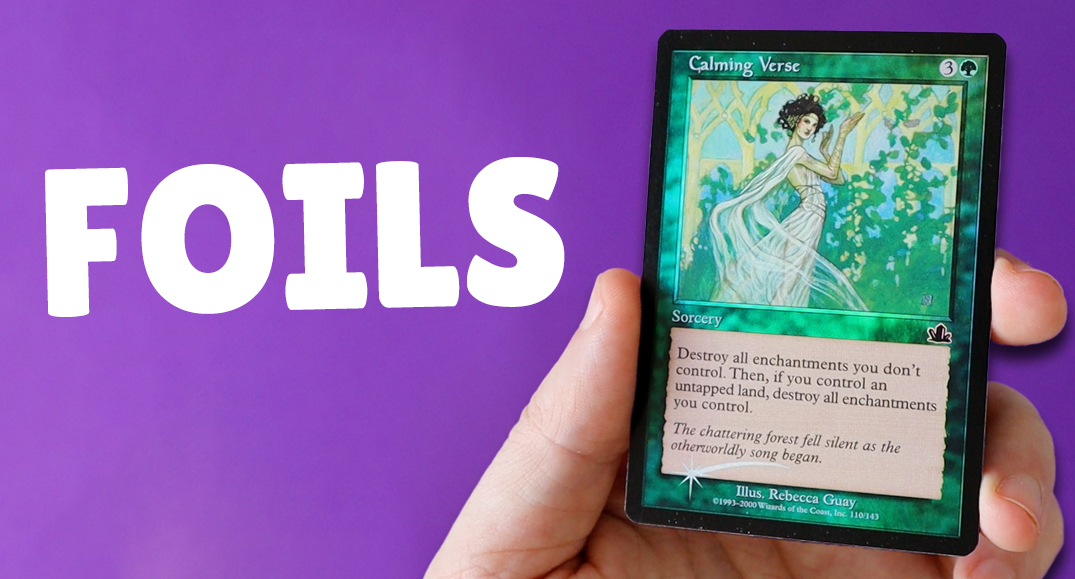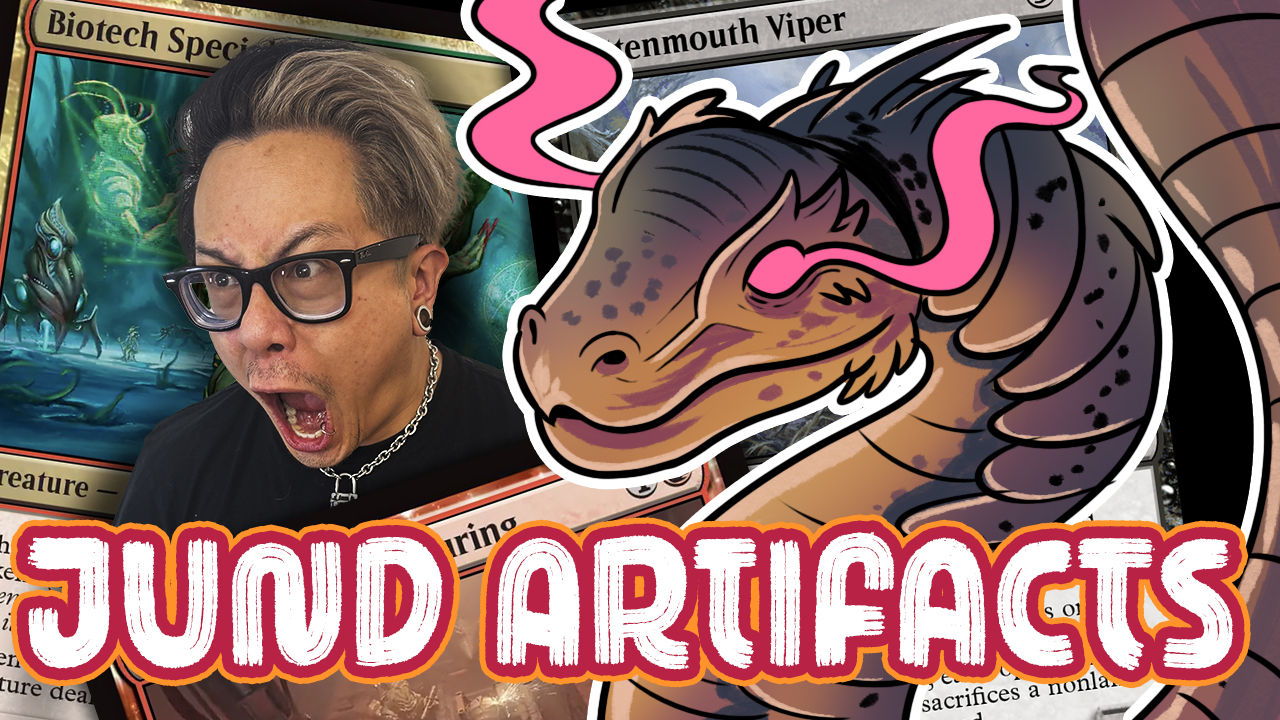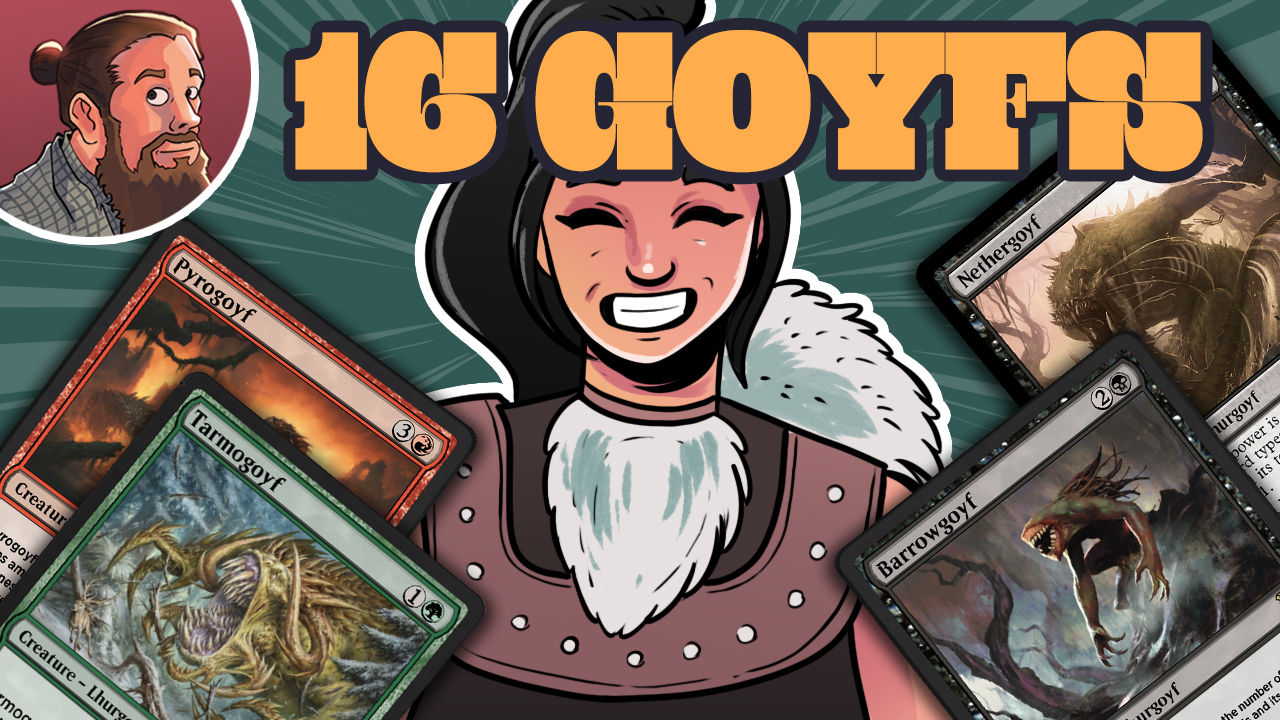Magic History: Breaking Bad Cards

From Bad to Broken
Every time a new expansion set is spoiled, players and deck-brewers alike pour over spoiler lists looking for the next breakout card. Sometimes a new card will get a massive amount of hype and pre-sell at a high price, only to turn out to be a total dud. Today's article will talk about cards that are the exact opposite. We're going to look at broken cards that were considered unplayable when they were released.
Most of the time, these cards just needed the proper deck to make them viable. Many times subsequent printings would be the tipping point for these cards, turning them into the important combo pieces they are today.
A Diamond in the Rough
I remember reading an article in InQuest Magazine prior to the release of Mirage that mentioned the new set would contain a 12/12 creature for one mana (Phyrexian Dreadnought) and a zero-cost artifact that produced three mana of any one color. Once I laid my eyes on the shiny new "fixed" version of Black Lotus, I was far from impressed. The clause on Lion's Eye Diamond (LED) that caused its controller to discard his or her hand seemed like it made the card completely useless and unplayable. I was not alone in holding that sentiment; the general consensus was that Lion's Eye Diamond was trash. As a matter of fact, Mark Rosewater once wrote an article in which he describes a player so frustrated by Lion's Eye Diamond's perceived worthlessness that he wanted to trade them in for something better.
It's true that Lion's Eye Diamond can't do a lot of things that a Black Lotus can do. You're not going to be casting a turn-one Jace, the Mind Sculptor with LED the way you would with a Lotus. LED still has explosive potential, and ultimately the card proved itself worthy of Magic's eternal formats, Vintage and Legacy. It took time and future printings to make Lion's Eye Diamond into the staple it is today. When Scourge was released LED finally found a home.
When cards like Tendrils of Agony were printed and the first Storm decks were being developed the "Bad Lotus" caught on. Players realized that through smart play and proper knowledge of the rules they could make LED perform a very good impression of a Black Lotus. Playing a card like Wheel of Fortune, Time Twister, or Infernal Tutor and holding priority allows LED to be used in response to that spell.
Lion's Eye Diamond started its life as a garbage rare and ended up an eternal format all-star. The card sees play in Legacy Dredge, and in Storm decks in Legacy and Vintage. In fact, LED currently sits with Black Lotus on the Vintage Restricted List, and it isn't likely to be removed in the future.

The Dark Side of Marit Lage
Dark Depths is one of my favorite examples on this list. The card is a perfect "Timmy" card for kitchen-table warriors across the multiverse. For only a mere thirty mana you can turn a non-mana producing land into the indestructible behemoth that is Marit Lage. With power and toughness of twenty and the ability to fly over attackers, the payoff for the thirty mana you spent is indeed rather large, but good luck paying for it in this lifetime.
I'm sure people considered using some infinite mana generating combos to release Marit Lage from its icy prison, but let's be honest, once you have infinite mana there are better ways to end a game. For this reason Dark Depths sat alone collecting dust in bulk bins and junk rare binders. It took a while for a card to be printed to change the fate of Dark Depths. The first card to combo with Dark Depths was printed in Zendikar.
Vampire Hexmage was printed as one of the many Vampires in the Zendikar expansion. Looking at her I'm fairly certain the intent was to print a card that could destroy planeswalkers. Jace, the Mindsculptor wasn't printed until the next set (Worldwake), but even so there were several tournament-playable planeswalkers. Outside of creature combat and direct-damage spells there was little in the way of cards that could directly kill a planeswalker at the time. I'm not sure how long it took for people to realize the obvious combo with Dark Depths, but once it was discovered people started playing the two cards together.

This deck dominated the Extended format in which it was legal and was responsible for Dark Depths being preemptively banned in Modern. Today you can still find Dark Depths being played alongside Vampire Hexmage, but there is also another card that combines with Depths to create an instant-speed Marit Lage token.
Thespian's Stage can't be countered because it's a land, so it adds a layer of resiliency and redundancy to the Marit Lage combo decks in Legacy and Vintage. The combo is relatively compact so you can find it as part of a hybrid deck like Workshop/Depths or in the sideboard of a Dredge deck.
With Thespian's Stage and Vampire Hexmage, Dark Depths has cemented itself as a playable combo card in every format in which it is legal. That's remarkable considering how bad it looked when it was first released!
You Have to Break a Few Bad Eggs if You Want to Make an Amulet...
Amulet is a great example of a fundamentally bad card that can do insane things in the correct setting. If you play competitive Magic you're surely aware of the Amulet Bloom decks that have terrorized Modern players in years past, culminating in the banning of Summer Bloom. It's funny to think that the deck was capable of doing so many broken things. The entire deck was made up of cards that wouldn't be constructed-playable in many circumstances.
Amulet doesn't affect your board position, it doesn't create card advantage, and it can't kill someone by itself. What it does do is make broken plays with the "Karoo lands" and Summer Bloom. The "bounce lands" from Ravnica were great in Limited as their drawback was mitigated by the color-fixing they offered, as well as helping the player hit their land drops. However, the lands were never good enough for constructed play in a normal context.

Amulet of Vigor allowed these lands to be untapped when they entered the battlefield. The other drawback of "bouncing" one of your lands was turned into a bonus by playing cards like Summer Bloom and Asuza, Lost but Seeking. The deck could generate copious amounts of mana, which it used to cast Primeval Titan or Hive Mind.
The Hive Mind kill was as easy as casting one of the "Pacts" in the deck, like Summoner's Pact, and killing an opponent who would be on the hook for the Pact's "lose the game" trigger. Primeval Titan kills people by searching out the utility lands in the deck. There's Slayer's Stronghold and Sunhome, Fortress of the Legion that can pump the Titan and give it double strike, resulting in a very fast clock. All of these plays can be done in the first few turns of the game, making the deck one of the fastest combo decks in the format.
Amulet and its namesake deck are a great example of breaking bad cards, but unlike many of the cards in today's list, the pieces were all there upon the card being released. It took some creativity and ingenuity to find all of the components. When I first heard about the deck, watching coverage of Pro Tour: Born of the Gods, I doubted the deck. Even with the deck's success that day I couldn't get past the idea that all of the cards looked bad at first glance. Of course, playing some matches of Modern on Magic Online and getting killed via Hive Mind on my fourth upkeep changed my opinion in a hurry.

Amulet of Vigor is still legal to play in Modern, but the enabler for the namesake deck, Summer Bloom, is banned.
Use Your Illusion
Here we have a laughably bad card that spent the first years of its existence relegated to bulk bins and the binders of school children who didn't know any better. Life gain is the only Magic strategy worse than mill, and if it wasn't for the super-powerful burn decks in Modern it would see even less play. Life gain doesn't kill anyone, and it doesn't affect the board. It's card disadvantage. This is why (by Wizards's own admission) life gain cards often have a large amount of life gained compared to their mana cost. The effect just isn't that good. So much of the time it doesn't matter if you gain ten life for two mana. I will admit that there have been successful cards that use life gain, but in general this isn't something to write home about.
As far as life gain cards go, Illusions of Grandeur is a bad one. The life you gained isn't permanent, and soon you'll run out of mana to pay the upkeep and you'll likely lose the game. This card is just something you normally never want to play. Just like the other cards in this article, this beauty became useful after another card saw print.
Donate came out in Urza's Destiny and turned the horrible drawback of Illusions into a bonus by sticking that crummy upkeep on your opponent! I imagine people looked at Donate when it was spoiled and thought to themselves what the worst possible card to give to someone would be. Luckily for combo players everywhere the answer turned out to be Illusions of Grandeur.

Trix isn't a viable deck anymore, but nobody can argue with the deck's Legacy. Trix was the most-feared deck in extended and even saw play in other formats. If the combo had not been outclassed by subsequent printings, I can only imagine that it might still be one of the top decks in Magic.
Flash in the Pan
Flash is an interesting card. Magic has undergone several rules changes over the course of its existence and these updates have caused certain cards to function differently. Flash was one of these cards that had changes to its Oracle text. In the late 1990's Flash received a power-level errata that made it so that the creature you cast with it never entered play if you didn't pay the creature's reduced casting cost. Academy Rector had been used in "Combo Winter" to cheat out Yawgmoth's Bargain, and Flash was a lightning-quick enabler.
In 2007 that power-level errata was removed and casting Flash was now the cheapest way to put a creature from your hand into play and into the graveyard. Why was putting a creature into play just to let it die better than a Show and Tell? Because with Protean Hulk, Flash was an instant win. This errata happened right before Grand Prix: Columbus, a Legacy GP, and people started brewing a deck called "Hulk Flash" immediately.
There have been multiple ways to kill someone using Protean Hulk. There was Shifting Wall, Phyrexian Marauder, and Disciple of the Vault. Searching for all twelve of those cards would cause your opponent to lose 32 life. "X" = zero when searching by converted mana cost, and this also caused all of those artifact creatures to go directly from the battlefield to the graveyard, triggering all of your Disciples. This combo is one of the most straight-forward win conditions. Also, searching for Virulent Slivers and a Heart Sliver would give you lethal damage via poison counters.
Steve Sadin used a more complicated win conditions involving Body Snatcher, Carrion Feeder, Karmic Guide, and Kiki-Jiki, Mirror Breaker to win Grand Prix Columbus.

The way the combo works is rather complicated as there are several steps. First off, you cast Flash to get the Protean Hulk into play and let it die. Then Karmic Guide and Carrion Feeder are searched for. Karmic Guide returns Hulk to play, and you sacrifice it to search your library for everyone's favorite cloning machine, Kiki-Jiki Mirror Breaker. Activate Kiki-Jiki cloning Karmic Guide, and in response sacrifice it to Carrion Feeder. A Karmic Guide token comes into play and returns Kiki-Jiki. This process can now be repeated infinitely, and you swarm in with a horde of 2/2 flying haste creatures. Seems legit to me!
Flash didn't last long after that Grand Prix. Soon the card was banned in Legacy and restricted in Vintage. I've read many articles and tournament reports about how Flash was making lives miserable for Vintage players, which says a lot about how busted the card can be. Two mana to win a game at instant speed is just an amazing thing, and to top it off many of these decks were able to run playsets of Pact of Negations. This meant that Flash decks could win with only two mana and have eight "free" counterspells to back it up!
Wrap-Up
So these were my five favorite examples of "bad cards gone broken." This article is not an exhaustive list however; there are more cards out there with similar stories. What's your favorite bad card that ended up broken? Let me know in the comments!
Before I leave you for this week, I have a quick public service announcement. This is something that readers of my Vintage series should pay attention to. "TMD", TheManaDrain.com is now under new ownership. My friend and Vintage streamer, "Brass Man" Andy Probasco has purchased the website with the goal of improving it and furthering the promotion of our favorite format. If you go to www.TheManaDrain.com you will see a message from the Brass Man describing his vision for the future of TMD. If you need to access the TMD boards, they are temporarily located at an archive website, and they still function as normal.
Brass Man loves Vintage as much as I do, and we have had many talks about the format, its fans, and its future. We both think that great things lie ahead, and I'm glad to see that TMD is moving forward and improving.
Every single day I feel fortunate to be writing about Vintage for MTGGoldfish. It gives me an opportunity to share my passion for the format with all of you. I can't wait to see what the future holds, and I hope you stick around to enjoy it with me!
Thanks for reading. Vintage 101 will be back next week. You can follow me on Twitter @josephfiorinijr - Islandswamp on MTGO













